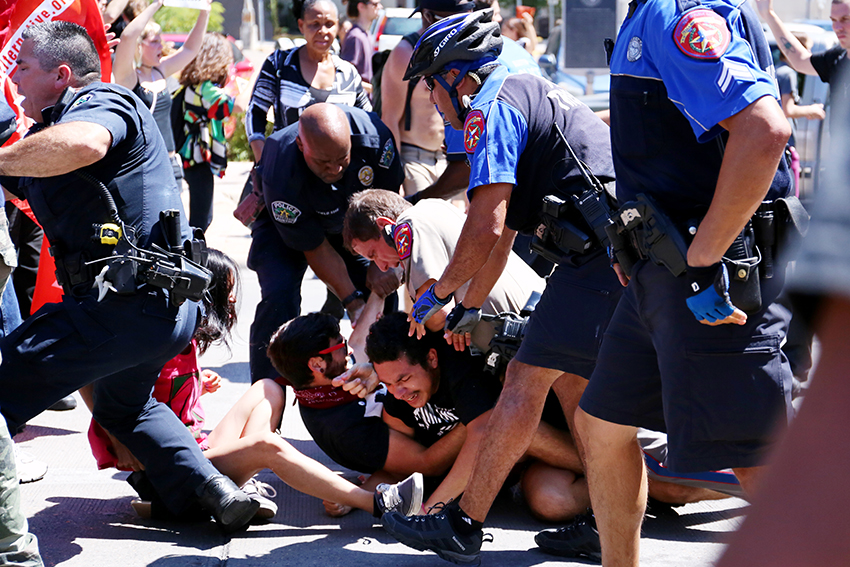New recommendations about police use of force could potentially change the way officers across the nation respond to violent situations, according to a recently published report by the Police Executive Research Forum, a national research and policy organization.
The recommendations call for a thorough re-training of officers and encourage police departments to take a comprehensive approach to the guidelines rather than implementing them partially.
Chief of Staff Brian Manley said the Austin Police Department has not yet decided whether the guidelines will be implemented in Austin.
“We are aware of the report and are evaluating it to see if there are any changes that need to be made for our department,” Manley said.
When approaching challenging incidents, the critical decision-making model outlined in the report provides a thought process for officers to use. This model includes collecting information, assessing the situation, threats and risks, considering agency policy, identifying options to determine the most appropriate course of action and re-assessing the situation.
Chas Moore, co-founder of Austin Justice Coalition, said he believes the guidelines have the potential to improve police behavior and their use of force in certain situations.
“The PERF guidelines seem to aim for the preservation of life at all costs, which is much better that what seems to the be the standard now, which is shoot first and ask questions later,” Moore said.
These guidelines were published about a week prior to the shooting and killing of teenager David Joseph by APD officer Geoffrey Freeman in early February. The shooting raised conversations about the effectiveness of police training, specifically with how officers handle force.
Some of the report recommendations include policy changes such as upholding the sanctity of life, practicing de-escalating techniques such as slowing down situations that do not pose an immediate threat and meeting the test of proportionality, which involves officers assessing how the general public will view the action law enforcement takes.
In addition, the report includes training and tactic reform, use of new equipment and resolution of information issues.
According to the recommendations, the Forum aims to provide scenario-based training that is a realistic representation of what officers are likely to encounter. This aims to reduce uncertainty in situations, which could lead to a potentially unjustified response.
The guiding principles also encourage training in less-lethal defensive mechanisms to prevent unnecessary use of firearms. Another suggestion is for officers to utilize personal protection shields when an attacker has a weapon other than a gun.
Susan Schorn, a writer, self defense advocate and Austin resident, said even though APD requirements meet or exceed the state’s standards, she believes in-service training can be enhanced through adding scenario training that will aid officers in compensating for any unconscious racial biases.
“While it’s true that there are a few bad apples causing a lot of police violence, the problem is more accurately described as a failure of leadership,” Schorn said. “There are proven, state-of-the-art training methods that can significantly reduce not just police violence against innocent civilians, but also the risk and stress experienced by the officers who serve our community.”





















